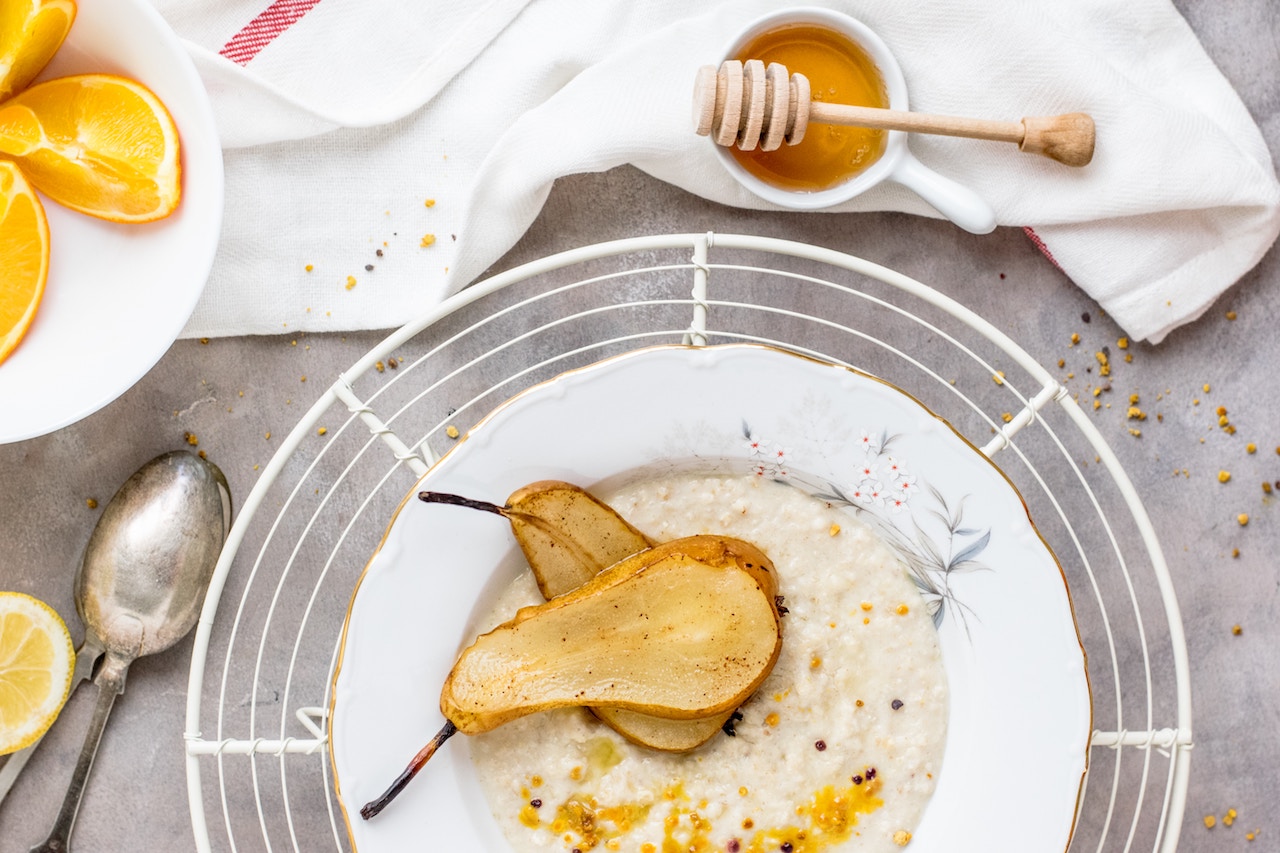Autumn is officially here and although we are yet to experience much change to the record summer temps, I can notice a slight change in the air, which is very exciting!
I love the focus on warming dishes full of seasonal ingredients, spices and grounding herbs, which start to appear during autumn, as we prepare for winter. If you are like me and adapt your diet to suit the season, here are 5 tips for eating well this autumn.
- Boost your breakfast
I can’t stress enough, how important it is to make sure the meal you start your day with (for most of us, this is breakfast!) is satisfying! Satisfying usually means it will contain a good portion of protein, fibre/complex carbs and healthy fats. Many of us miss the mark when it comes to protein and fibre at breakfast. This may be due to choosing a refined bread and opting for a low protein toast topping such as jam or vegemite. Instead choose a complex slow release carb option such as wholegrain or sourdough toast or oats with oat bran. Protein wise, make sure your breakfast at least contains eggs, fish, dairy (yoghurt, cheese, milk), tofu, nuts/seeds, legumes or protein powder.
- Eat seasonally
We all know seasonal produce not only tastes better but it is also better for our health and the environment. I encourage you to go one step further this season and also aim to source your food locally, as much as you can.
My top 3 autumn fruits are:
- Figs – eat as is, roasted/pan-fry with a dollop of yoghurt, serve on top of toast or porridge or in warm salads.
- Apples – sauté and make into a puree to serve with yoghurt, bake and eat with yoghurt as a fibre-rich dessert, grate and add to meatball mixes or alongside grated carrot and beetroot in a slaw.
- Pears – add to salads, eat as is, add to smoothies, pan-fry or roast and top on porridge or toast.
My top 3 autumn vegetables are:
- Mushrooms – sauté and serve on toast with goats cheese or make into an omelette, stuff with rice or lentil dahl and serve as a light meal, mince and make into patties or ‘meatloaf.’
- Pumpkin – roast and add to salads, add to curries and stews, hollow out baby pumpkins and stuff using rice as a plant-based meal.
- Eggplant – grill and add to salads or as a dinner side, stuff with lentils or make into a moussaka.
- Find a healthy warming drink to sip
As soon as the temp starts to drop, many of us get into the habit of sipping warming drinks. Depending on which sort of drink you select, this can be a very healthy habit or a not so healthy one. To make sure you are sipping your way to health, here are some good options:
- Golden milk – made using a base of milk of choice (I like coconut), turmeric, cinnamon and honey – make sure to add a pinch of pepper to help with the absorption of curcumin, the active compound in turmeric.
- Green tea – you can’t go past green tea when talking healthy drinks! This is because green tea boasts a high antioxidant content and contains L-theanine, which helps to promote calmness. If you prefer a creamy concoction, try a matcha latte made using matcha powder.
- Rooibos – a very popular herbal tea pick, it is naturally caffeine free and rich in polyphenols.
- Find warmth in spices
Eating for warmth and comfort can appeal to many during autumn and winter. However, a large portion of carb heavy and creamy food is not the only way to feel comforted and warmed up by foods. Instead try using an array of warming spices in cooking such as cayenne, paprika, ginger, raw garlic, and chilli – you will feel warmed and also reap the health benefits such spices have to offer.
- Don’t forget the veg!
Salads tend to drop off the radar for some once the cooler months arrive and meals become more carbohydrate based. Carbs are a very important component of the diet but its important to continue to try to also include a wide variety of veg in your diet daily. A few ways to eat more veg without necessarily having a salad include:
- Make a cauliflower, pumpkin and chickpea curry
- Add capsicum, green beans, broccoli, carrot and bok choy to stir-fry’s
- Try making a roasted vegetable stack using eggplant, zucchini, sweet potato, capsicum and tomato, topped with haloumi and pesto
- If you are a pasta lover, roast a big tray of veg such as onion, garlic, pumpkin, capsicum and tomato – blend with a little miso paste/hot water or stock, spices and herbs and turn into a yummy pasta sauce
